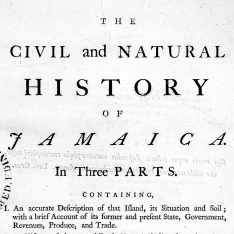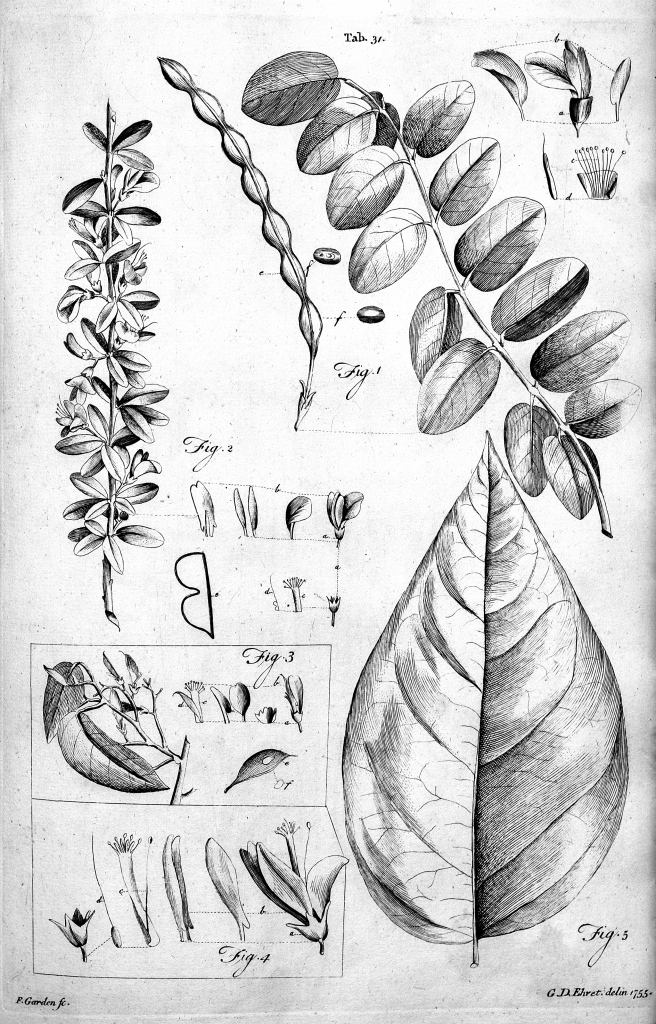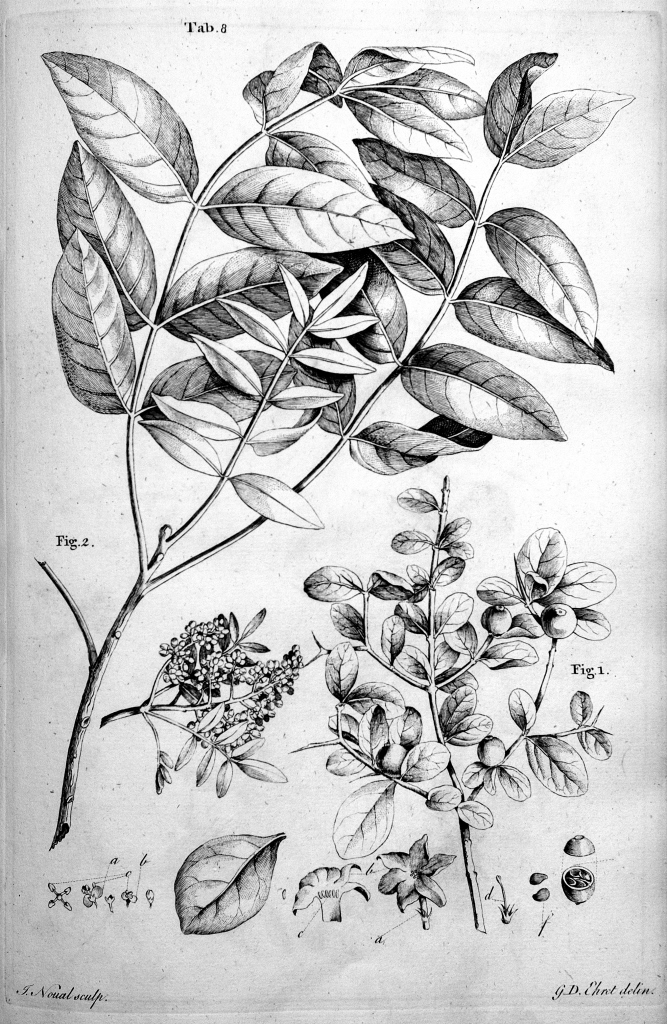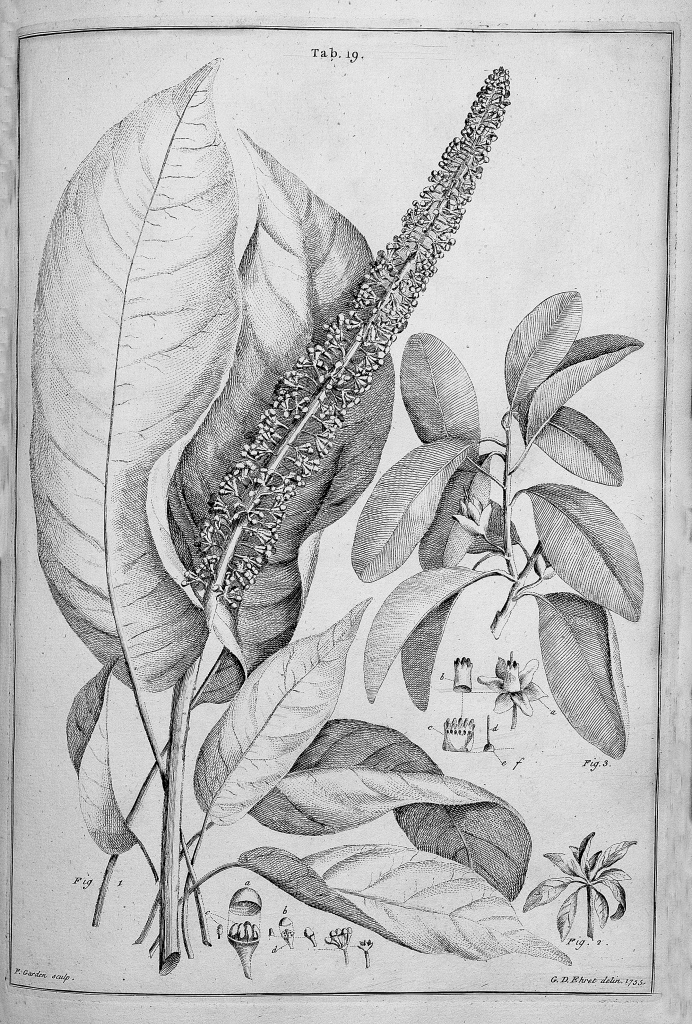
Patrick Browne, History of Jamaica (1756)

Two hundred and forty years after Europeans first inhabited Jamaica, Patrick Browne (c1720–1790), an Irish physician published his history of the island. Browne was born in County Mayo and was educated locally before being sent to stay with relatives in Antigua in 1737. He stayed for a year before returning to Europe to study medicine, first graduating from the University of Rheims in 1742 before matriculating but not graduating from the University of Leiden. Browne spent three years as a doctor in St Thomas’s Hospital in London before returning in 1746 to the West Indies, where he practiced as a physician in Kingston, Jamaica. Any spare time was spent studying the natural history of the island.
This History of Jamaica (1756) was not the first book on the subject. Hans Sloane’s Natural History of Jamaica was published in 1701 and 1725. What makes Browne’s work noteworthy is his use of Linneaus’ Sexual System, the first English language book to do so (except in the section on animals where – in his own words – ‘that seemed forced or unnatural’). Although Browne intended the work to have three parts, only two were published due  to the number of pages exceeding the limit Browne had set; the third part was intended to be ‘an Account of the Nature of Climates in General and their Different Effects upon the Human Body; with Details of the Diseases arising from this source particularly within the Tropics’. This was never published. However, Browne gives the medical and/or economic importance of the plants and fish as part of the text of the second part of the volume.
to the number of pages exceeding the limit Browne had set; the third part was intended to be ‘an Account of the Nature of Climates in General and their Different Effects upon the Human Body; with Details of the Diseases arising from this source particularly within the Tropics’. This was never published. However, Browne gives the medical and/or economic importance of the plants and fish as part of the text of the second part of the volume.
Forty-nine copper plate illustrations were drawn from nature by Georg Ehret (undoubtedly the most renowned botanical artist of the mid-nineteenth century). Ehret received 40 guineas as prepayment for his work. Browne was so anxious for Ehret to undertake the drawings that he arrived at Ehret’s rooms with the money. The engravers’ names are mostly unknown. Other works in the College Library illustrated by Ehret are Griffith Hughes’s Natural History of Barbados,  published in 1750 in London; Alexander Russell’s Natural History of Aleppo published in 1756 also in London and Carl Linneaus’s Hortus Cliffortianus published in Amsterdam in 1737.
published in 1750 in London; Alexander Russell’s Natural History of Aleppo published in 1756 also in London and Carl Linneaus’s Hortus Cliffortianus published in Amsterdam in 1737.
It is believed that a maximum of 250 copies of Browne’s History were published. Three copies were sent to Linnaeus who subsequently bought Browne’s Jamaican herbarium. A fire in 1756 destroyed the publisher’s premises and presumably most of the original manuscripts and drawings. Some of his other manuscripts are in the Linnean Society and some Ehret drawings (perhaps preliminary sketches) are in the Natural History Museum, London. A second edition was published in 1789, but although Browne was aware of this, he was not involved in the new edition.



